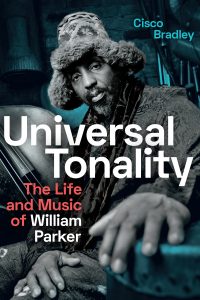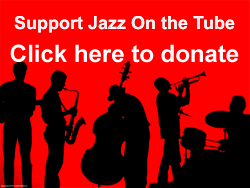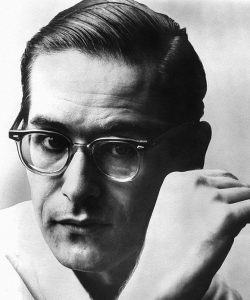Artist-Educators, Jazz on the Tube Interview, Ornette
Interview
– Ken McCarthy
Jazz on the Tube
P.S. Our unique programming is made possible by help from people like you. Learn how you can contribute to our efforts here: Support Jazz on the Tube
Thanks.
Music credit: The Jazz on the Tube podcast theme song is “Mambo Inferno” performed by The Manhattan School of Music Afro-Cuban Jazz Orchestra conducted by Bobby Sanabria from the CD ¡Que Viva Harlem!
Artist-Educators, Jazz on the Tube Interview, Podcasts
References
Creative Music Studio: CreativeMusic.org
Membership: The Music Mind Experience group
Book: The Music Mind Experience: Playing-Listening-Singing-Moving
– Ken McCarthy
Jazz on the Tube
P.S. Our unique programming is made possible by help from people like you. Learn how you can contribute to our efforts here: Support Jazz on the Tube
Thanks.
Music credit: The Jazz on the Tube podcast theme song is “Mambo Inferno” performed by The Manhattan School of Music Afro-Cuban Jazz Orchestra conducted by Bobby Sanabria from the CD ¡Que Viva Harlem!
Artist-Educators, Jazz on the Tube Interview, Podcasts
In addition to being a high art form, jazz is a subset of show business and part of show business is “business.”
In this interview with industry insider Matt Fripp, we talk about what goes into building a touring career: agents… festivals…club bookers…clever ways to get a great-looking video on the cheap… and how to put it all together to make it happen.
If you have a jazz friend who dreams of touring especially the European festival circuit (Matt has special expertise in this area) make sure they know about this interview.
Click here to visit JazzFuel.com
– Ken McCarthy
Jazz on the Tube
P.S. Our unique programming is made possible by help from people like you. Learn how you can contribute to our efforts here: Support Jazz on the Tube
Thanks.
Music credit: The Jazz on the Tube podcast theme song is “Mambo Inferno” performed by The Manhattan School of Music Afro-Cuban Jazz Orchestra conducted by Bobby Sanabria from the CD ¡Que Viva Harlem!
Artist-Educators, Jazz on the Tube Interview
Americans used to be so musically literate that not only was sheet music routinely sold in the lobbies of theaters, but the sheet music of a hit could sell a million, even millions, of copies.
People would take home the hits of the day and play them with friends and family at home and in public places like barbershops.
Then along came recorded music and the population as a whole shifted away from making music to consuming it.
Still the music survived and a new wave of young musicians used the new technology to usher in a golden age of performance. (Think Charlie Parker playing his Lester Young records over and over and studying them under a musical microscope.)
A few generations later, the government bureaucrats who control public education, started, in their infinite wisdom, to remove music education from the schools kicking the legs out from basic music literacy which even the poorest child once had as a birthright. (Think Louis Armstrong learning basic solfege and singing EVERY DAY in class as part of the normal curriculum for schoolchildren in early 20th century New Orleans.)
Not only is music education disappearing, but appreciation of music skill seems to be in decline.
The case can be made that today popular music is in the hands of a few studio-based producers who use software tricks like auto-tune to homogenize music and remove human skill from its creation.
From one perspective things could start to look incredibly bleak.
But thanks to musician ingenuity, there’s a light on the horizon.
In addition to schools and teachers who continue educating children in music, a new generating of artist-educators have taken to the online world to make the art and science of jazz available in a way it has never been before to anyone with an Internet connection.
Despite all the challenges, in this one corner of the world, we are truly living in a golden age of music education.
Jazz on the Tube sits down with one of the innovators to talk about the phenomenon.
– Ken McCarthy
Jazz on the Tube
P.S. Our unique programming is made possible by help from people like you. Learn how you can contribute to our efforts here: Support Jazz on the Tube
Thanks.
Music credit: The Jazz on the Tube podcast theme song is “Mambo Inferno” performed by The Manhattan School of Music Afro-Cuban Jazz Orchestra conducted by Bobby Sanabria from the CD ¡Que Viva Harlem!
Chroniclers, Jazz on the Tube Interview, Podcasts
Memphis produced George Coleman, Hank Crawford, Booker Little, Phineas Newborn, Jr, Jamil Nasser, Charles Lloyd, Harold Mabern, and Louis Smith. And that’s the shortlist.
What the heck was going on there? The great Phil Schaap explains.
Jazz on the Tube’s in-depth looks at the jazz scene across America
Boston
The Boston Chronicles
https://www.jazzonthetube.com/the-boston-chronicles-richard-vacca/
Detroit
Jazz from Detroit
https://www.jazzonthetube.com/jazz-from-detroit/
Kansas City
Jazz Secrets Revealed
https://www.jazzonthetube.com/jazz-secrets-revealed/
LA
Kareem Abdul Jabar on LA’s Central Avenue
https://www.jazzonthetube.com/kareem-abdul-jabar-on-las-central-avenue/
New Orleans
John Swenson – New Atlantis
https://www.jazzonthetube.com/nolarebirth/
New Orleans Remix
https://www.jazzonthetube.com/jack-sullivan-new-orleans-remix/
Roget Lewis – The good news from New Orleans
https://www.jazzonthetube.com/roger-lewis-and-the-good-news-from-new-orleans/
San Francisco
Harlem of the West – The San Francisco Jazz Era
https://www.jazzonthetube.com/harlem-of-the-west-the-san-francisco-jazz-era/
Jazz on the Barbary Coast
https://www.jazzonthetube.com/the-birthplace-of-jazz/
St. Louis
The City of Gabriels
https://www.jazzonthetube.com/podcast-st-louis-city-of-gabriels/
Texas
Texan Jazz
https://www.jazzonthetube.com/interview-with-dave-oliphant-about-texan-jazz/
Ornette – Deep from the Heart of Texas
https://www.jazzonthetube.com/ornette-deep-from-the-heart-of-texas/
– Ken McCarthy
P.S. Our unique programming is made possible by help from people like you. Learn how you can contribute to our efforts here: Support Jazz on the Tube
Thanks.
Chroniclers, Jazz on the Tube Interview, People, Podcasts, Producer-Presenters
Interview with Cisco Bradley
Download the mp3 here
This book is a model for jazz biography (and really for a biography of any creative person.) It not only documents the striving of an individual artist, in this case, William Parker, but also the dynamic communities that are essential for the development of artists.
I strongly recommend this book for music educators, music students, and anyone who wants to get “under the hood” of what goes into making an artist who succeeds in expanding the boundaries of the art.
Anyone interested in (or nostalgic for) the stunning flowering of creative music that took place in the 1970s when, believe it or not, rents in the East Village and Soho of Manhattan were low and musician-operated venues were abundant will also love this book.
– Ken McCarthy
Jazz on the Tube
P.S. Our unique programming is made possible by help from people like you. Learn how you can contribute to our efforts here: Support Jazz on the Tube
Thanks.
Music credit: The Jazz on the Tube podcast theme song is “Mambo Inferno” performed by The Manhattan School of Music Afro-Cuban Jazz Orchestra conducted by Bobby Sanabria from the CD ¡Que Viva Harlem!



